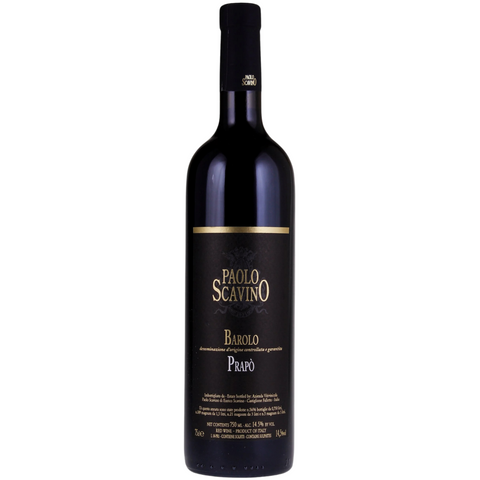Founded in 1921, Paolo Scavino is one of Barolo’s most respected family estates, now guided by fourth-generation winemaker Enrico Scavino and his daughters Enrica and Elisa. The estate has long been celebrated for its pursuit of purity and site transparency, producing wines from an enviable collection of top Barolo crus. While not certified organic, their farming is meticulous and sustainable, emphasizing soil vitality and low-impact vineyard work. In the cellar, Scavino marries traditional and modern methods—favoring gentle macerations and selective use of French oak—to reveal the nuances of each site. Their approach is defined by clarity, elegance, and commitment to terroir, making them a benchmark for contemporary Barolo.

2021 Paolo Scavino Barolo "Prapò", Piedmont, Italy
A singular expression of Barolo from the historic Prapò cru, this wine is a study in precision and poise. It opens with lifted notes of rose petal, red cherry, and crushed herbs, unfolding into deeper nuances of anise, dried tobacco, and tar. The palate is taut and sculpted, with vibrant acidity and firm, chalky tannins guiding a long, mineral-driven finish. A wine of both elegance and depth, showcasing the finesse of Serralunga d'Alba terroir with Scavino’s unmistakable clarity of style.
$105.99
$105.99
There are 5 units left in stock.
ABOUT THIS WINE
The 2021 Barolo “Prapò” comes from a tiny, amphitheater-like vineyard in Serralunga d'Alba, known for its compact sandstone and limestone-rich soils. These conditions yield wines of notable structure and minerality, and in Scavino’s hands, this intensity is channeled into refinement. Aged in a combination of large neutral casks and French barrique for approximately 24 months, the wine gains complexity without overshadowing the cru's identity. Aromatically expressive with floral tones, dried cherry, iron, and savory spice, it moves with linearity on the palate, balanced by brisk acidity and a strong sense of place. This is a wine meant for aging, though already compelling in its youth with decanting.
Food pairings gravitate toward earthy, umami-rich dishes—braised beef cheeks, truffle risotto, or aged robiola cheese all find harmony here.
ABOUT THIS PRODUCER
Details:
| Grape(s) | Nebbiolo |
| Farming | Sustainable |
